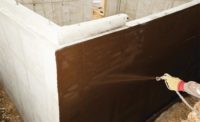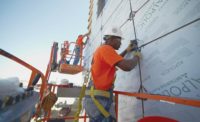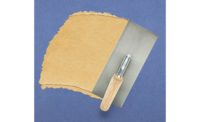How much do you really know when it comes to waterproofing residential and commercial buildings?
According to a recent report from management consulting and market research firm, Lucintel, “The global waterproofing membrane market is expected to reach an estimated $24.2 billion by 2021.” Increasing construction activities and the cost-effectiveness of waterproofing membranes, according to the report, are major growth drivers for this market. Although this statistic forecasts positive growth, there are some challenges of adopting the best water management practices that may be harmful ultimately to the end users who experience failures due to improper moisture management. This article seeks to open the discussion and provide insight into the best practices for preventing water from infiltrating the walls.
An Age-old Practice
While water management systems continue to evolve to meet the needs of home and building owners, it is a practice that originated when masons discovered they could mitigate the effects of rainfall by incorporating sloped roofing and masonry components into their building design. A perfect example is the St. Mary Roman Catholic Church in Detroit whose slopes, while traditional in style and pleasing to the eye, are not entirely aesthetic and serve an important function: giving the building a built-in water management system.
Because today’s homeowners-to-be will likely pass on the sloping arcs and flying buttresses of the Gothic era, builders and contractors must stay up to date on the most current and best practices when it comes to eliminating moisture and water from the building envelope. A standard housewrap may meet building code, but this minimal effort has a lower chance of increasing the longevity of a building. New draining and ventilation drying rainscreen and fiberglass lath systems are specifically designed to allow incidental liquid water to drain and enables efficient ventilation drying of the building envelope.
As with any innovation, disrupting the status quo comes with challenges. All too often, budgets take priority over the best building practices, and sometimes lack of knowledge can be a factor. In the best-case scenario, builders are fully up-to-speed on the most current water management systems and are completely invested in providing the best solution for the long-term health of a building, not a short-term cost. Most builders have knowledge of water management; however, many still follow traditional methods, which are quickly becoming outdated and leaving homeowners with an array of moisture issues including mold and even complete wall failure.
Awareness is the first step to addressing water management issues. Once builders and contactors are properly informed of the need for drainage, understanding is the next step to optimal building design and product specification for water management. This is where building science comes in.
What are the cladding and structural materials in the project? Which water-resistant product will benefit the structure most? Why is this necessary? Understanding that water will flow in to the structure and giving it a way to quickly drain out before damage occurs is critical. Providing ventilation for drying any remaining liquid water or condensation is also critical.
Another vital step in this process is to establish ownership and responsibility for the water management system and resistance. If responsibility goes undecided, all could be at fault if failure occurs. Typically, the lead builder or contractor would be the one to assess and decide upon a water management strategy. However, what happens when two differing materials such as the windows and cladding meet? It is then that a collaborative effort between all aspects of construction must be made to ensure that the entire building is protected against water and weather-related events.
Lasting Value
Whether you’re new to the field or an industry veteran, most everyone is aware of the damaging effects improper moisture control can have, including mold, mildew, leaks and failures. Instead, the industry should continue to discuss product options and specification to find the most appropriate solution.
Selecting a product based upon quality and value is the next essential step. Cheaper product solutions are rarely best for the building. Finding value in durable products that last is the key to selecting a product for longevity. Explaining a small price difference to the homeowner and how it will protect their investment for the long-term is paramount.
While codes and regulations are the largest driver of change, the strongest force will soon be building science that translates to value for the building owner. As a client-facing industry, going the extra mile for the building owner, homeowner and building occupants may result not only in greater structural integrity, but also in repeat customers. Quality should be top of mind in every build, from the time the initial blueprints are created to the moment the realtor hands the keys to an excited new homeowner. Building is not just about constructing a structure. It is, above all, the true cultivation of trust between the builder and the client.





